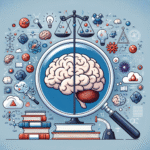
Introduction
In a world where acquiring new skills is more vital than ever, understanding the nuances of skill acquisition is crucial. Whether it’s learning a new language, mastering a musical instrument, or developing a professional competency, the journey is often complex and multifaceted. Among the various methods to facilitate this journey, explicit learning stands out as a powerful tool. This article delves into mastering skills: the role of explicit learning in skill acquisition, illuminating its principles and offering practical insights for learners at all stages.
What is Explicit Learning?
Explicit learning refers to the process where individuals consciously acquire knowledge or skills through direct instructions, structured practice, and specific feedback. Unlike implicit learning, which occurs more naturally and subconsciously, explicit learning is deliberate and often involves clear goals and strategies.
Key Features of Explicit Learning:
- Structured Approach: Involves clear objectives.
- Direct Instruction: Learning is guided by teachers or mentors.
- Active Participation: Learners engage in practice and receive feedback.
- Measure of Progress: Skills can be quantitatively assessed.
This structured approach makes explicit learning a preferred method in educational settings, where curriculum design often targets cognitive skills and measurable outcomes.
The Importance of Explicit Learning in Skill Acquisition
When it comes to mastering skills, one vital question arises: Why is explicit learning crucial? Here’s a closer look:
1. Accelerates Skill Acquisition
Explicit learning promotes quicker understanding and mastery of a skill. Through a systematic approach, learners can break down complex tasks into manageable components, speeding up their overall learning process.
Case Study: Language Learning
Consider the case of an adult learning Spanish. By enrolling in an explicit course rather than merely engaging in conversation or immersion, they can grasp grammatical rules, vocabulary, and pronunciation more effectively. Research shows that structured courses often yield higher proficiency levels compared to informal learning methods.
2. Enhances Retention and Transfer of Skills
Explicit learning equips learners with the strategies to retain information longer and transfer skills to different contexts. The organized nature of the teachings allows for better linkage and memory retention.
Case Study: Musical Training
A study of students learning an instrument showed that those who received explicit instruction about musical theory were better able to perform in varied contexts, such as solo performances and ensembles, compared to those who learned implicitly through play.
3. Fosters Metacognitive Awareness
Explicit learning builds metacognitive skills by encouraging learners to reflect on their learning processes. Understanding what works best for them deepens engagement and drives continuous improvement.
Analysis: By engaging learners in self-assessment methods post-lessons, educators can make them aware of their strengths and areas for improvement. This meta-awareness enhances their capacity to tackle future challenges more effectively.
Techniques to Enhance Explicit Learning
To truly harness the benefits of explicit learning in skill acquisition, certain techniques stand out:
1. Goal Setting
Setting clear, achievable goals allows learners to focus on what they need to master. This fosters motivation and gives learners direction.
Table: SMART Goals Framework
| Element | Description | Example |
|---|---|---|
| Specific | Clearly defined objectives | “Learn to play 5 songs on the guitar” |
| Measurable | Track your progress | “Practice for 30 minutes daily” |
| Achievable | Realistic and attainable | “Mastering 5 chords this month” |
| Relevant | Aligned with broader objectives | “Playing guitar to perform at family gatherings” |
| Time-bound | Set a deadline | “Achieve this by the end of next month” |
2. Feedback Mechanisms
Providing feedback is integral to explicit learning. Constructive criticism helps learners adjust and improve their techniques.
Case Study: Sports Coaching
In sports, coaches frequently employ explicit feedback alongside performance metrics, leading to faster improvements in techniques and strategies. A use case involving soccer players illustrates that constructive critique significantly enhances player performance over time.
3. Active Engagement
Engaging students through interactive methods like discussions, practical exercises, and group projects can facilitate better understanding and retention.
Analysis: Research has indicated that students who participate in active learning demonstrate higher retention rates compared to traditional lecture-based learning.
Challenges in Explicit Learning
While explicit learning offers numerous advantages, it’s not without challenges:
1. Time Consuming
The structured format of explicit learning can sometimes be time-intensive, requiring sustained effort and commitment from both educators and learners.
2. Potential for Over-Reliance
Relying too heavily on explicit methods can stifle creativity and the development of implicit skills. It’s essential to balance explicit learning with opportunities for exploration.
3. Variation in Learning Styles
As every learner is different, a one-size-fits-all approach may not yield optimal results for everyone. Personalization in teaching methods is key to engagement.
Practical Applications of Explicit Learning
In various fields, the significance of mastering skills: the role of explicit learning in skill acquisition can be observed:
1. In Education
Curricula increasingly embrace explicit methods, focusing on clear learning outcomes and standardized assessments. Teachers employ rigorous strategies designed to ensure that students grasp essential concepts and skills.
2. In the Workplace
Organizations implement training programs that leverage explicit learning techniques to enhance employee skills. Structured onboarding processes often lead to better employee performance and satisfaction.
3. In Sports and Arts
Trainers and coaches in sports and performing arts adopt explicit learning methods to develop talent effectively, fostering a disciplined environment for practice and learning.
Chart: Benefits of Explicit Learning
| Area | Benefits |
|---|---|
| Education | Structured learning |
| Workplace | Enhanced skill retention |
| Sports/Arts | Faster skill acquisition |
Conclusion
Mastering skills: the role of explicit learning in skill acquisition is undeniable. By employing clear methodologies, structured frameworks, and strategic feedback, learners can enhance their capabilities more effectively than through implicit means alone. As you embark on your skill acquisition journey, consider integrating explicit learning techniques into your routine. Commit to structured practices, set measurable goals, and engage actively to unlock your potential.
FAQs
1. What is the difference between explicit and implicit learning?
Explicit learning is a conscious process with structured guidance, while implicit learning occurs more naturally without direct teaching.
2. How can I apply explicit learning in my daily life?
Set clear goals for what you want to learn, seek structured resources, and actively practice the new skills you are developing.
3. Is explicit learning suitable for all age groups?
Yes, explicit learning can be beneficial for learners of all ages, though methods may need to be adjusted based on the individual’s development stage.
4. Can explicit learning be used in creative fields?
Absolutely! Explicit techniques can enhance skills in creative areas by providing foundational knowledge and structures that support innovation.
5. What role does feedback play in explicit learning?
Feedback is crucial in explicit learning as it guides learners in making necessary adjustments to improve their skills over time.
By understanding and applying the principles behind mastering skills: the role of explicit learning in skill acquisition, you’re well on your way to achieving your personal and professional goals. Let your learning journey begin!














